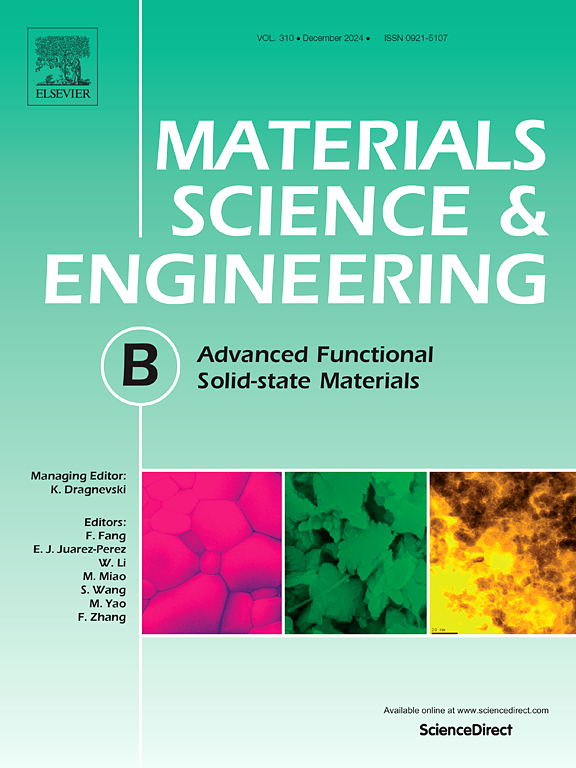ALD ZnO薄膜厚度和沉积温度对专用低温退火后处理改善电性能的影响
IF 4.6
3区 材料科学
Q2 MATERIALS SCIENCE, MULTIDISCIPLINARY
引用次数: 0
摘要
本研究考察了层厚和沉积温度对原子层沉积(25-800 nm, 150-200℃)ZnO层结构和光电子性能的影响。光学带隙随厚度和温度呈对数增长,与先前的报道不同。XRD分析显示残余应力很小,但织构变化明显。详细的光学带隙、折射率、厄巴赫能量、晶体尺寸和电阻率的评估显示出一致的趋势。确定了自恢复效果的特定厚度限制和退火窗口,以获得最佳的性能恢复。与之前的研究不同,霍尔效应和电化学分析证实,通过增强迁移率和载流子浓度,电阻率显着降低了5倍。光致发光分析显示非辐射复合减少,锌间隙增加。重要的是,这些见解有助于弥合理解退火行为的空白,并支持高性能zno基器件的设计。本文章由计算机程序翻译,如有差异,请以英文原文为准。
Effects of thickness and deposition temperature of ALD ZnO thin films on the improvement of electrical properties through dedicated low temperature annealing post-processing
This study investigates how layer thickness and deposition temperature affect the structural and optoelectronic properties of ZnO layers deposited via atomic layer deposition (25–800 nm, 150–200 °). Optical band gaps increased logarithmically with both thickness and temperature, diverging from earlier reports. XRD analysis revealed minimal residual stress but notable changes in texture. Detailed evaluation of optical band gap, refractive index, Urbach energy, crystallite size, and resistivity revealed consistent trends. A specific thickness limit to self-recovery effect and annealing window was identified for optimal property recovery. Unlike previous studies, resistivity was significantly reduced — by up to fivefold — through enhanced mobility and carrier concentration, confirmed by Hall effect and electrochemical profiling. Photoluminescence analysis showed decreased nonradiative recombination and increased Zn interstitials. Importantly, these insights help bridge gaps in understanding annealing behavior and support the design of high-performance ZnO-based devices.
求助全文
通过发布文献求助,成功后即可免费获取论文全文。
去求助
来源期刊

Materials Science and Engineering: B
工程技术-材料科学:综合
CiteScore
5.60
自引率
2.80%
发文量
481
审稿时长
3.5 months
期刊介绍:
The journal provides an international medium for the publication of theoretical and experimental studies and reviews related to the electronic, electrochemical, ionic, magnetic, optical, and biosensing properties of solid state materials in bulk, thin film and particulate forms. Papers dealing with synthesis, processing, characterization, structure, physical properties and computational aspects of nano-crystalline, crystalline, amorphous and glassy forms of ceramics, semiconductors, layered insertion compounds, low-dimensional compounds and systems, fast-ion conductors, polymers and dielectrics are viewed as suitable for publication. Articles focused on nano-structured aspects of these advanced solid-state materials will also be considered suitable.
 求助内容:
求助内容: 应助结果提醒方式:
应助结果提醒方式:


